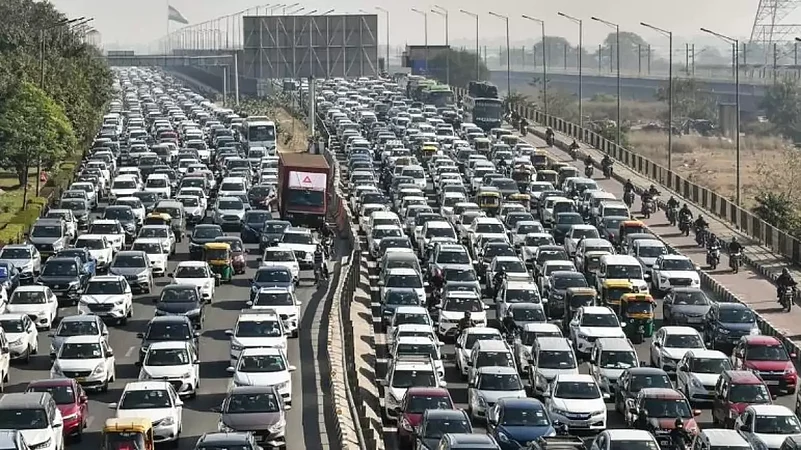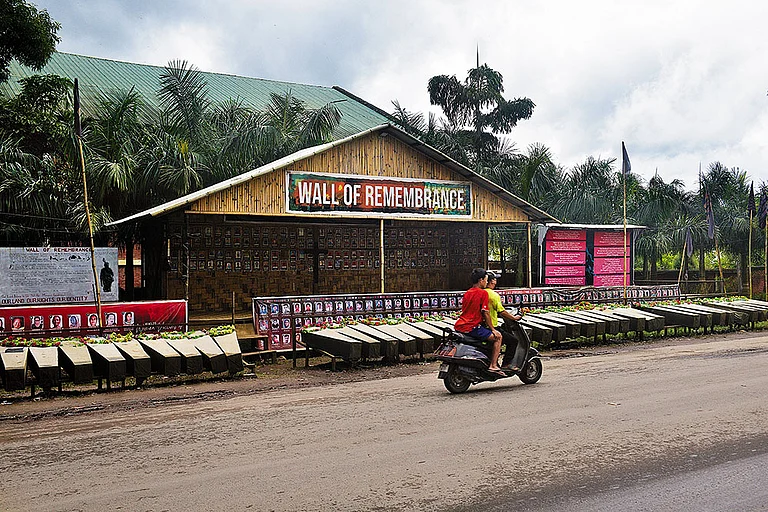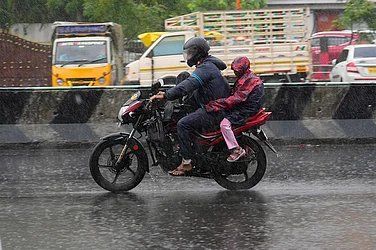Amid inflation and rising unemployment, where even highly skilled professionals are losing jobs, consider the scenario of losing a 10 lakh deal due to traffic congestion.
"I am a small-scale businessman and an IT graduate. I worked as a software engineer but due to the pandemic, I lost my job. Then I ventured into my own business, supplying customised water bottles and gift items to corporate companies. Despite my efforts, I faced a setback when I had to travel from ISRO Layout to Koramangala to finalise a deal. Although I had scheduled the meeting for 2 PM and left at 11 AM, I couldn't reach on time because of the traffic and I lost the deal. I am the only person earning in the family with old parents to look after. This deal was a significant opportunity for me, and its loss has left me feeling frustrated and demotivated," says Ramakrishna Iyengar.
Bengaluru, the vibrant IT hub and silicon valley of India is full of innovation and energy. But beneath this high-tech exterior lies a long-standing problem that has plagued the city for years – traffic congestion. From locals to travellers, everyone has a tale to share about their experience with the traffic of Bengaluru. Commuters in this city frequently find themselves stuck in long queues, trying to navigate the chaotic roadways. Twitter and other social media platforms have become hotspots for people to vent their frustration. The problem of traffic has made the city a subject of humorous memes.
A recent incident surfaced on Twitter where a man shared his encounter with Rapido auto's wait time. The individual had successfully booked an auto and a driver had confirmed the ride. Yet, the displayed waiting duration was 225 minutes.
Suffering Of The Commuters
Lata Gowda says, "The prices of cabs double due to traffic, especially when heading to the airport. Travelling by bus is even more inconvenient as it has to halt at every stop, in addition to the traffic and signals. Commuting in Bengaluru means spending 7-8 hours in a day in traffic."
Navigating through Bengaluru's traffic can feel like an eternal struggle. Daily commuters spend hours stuck in their vehicles, inching their way forward amidst honking horns and exhaust fumes. The city's crowded roads have turned a simple 6-kilometre-long commute into a difficult journey that takes hours. People find themselves struggling trying to reach their destinations on time, only to be stopped by traffic jams and seemingly endless traffic jams.
"Considering the financial burden of using public transport, having one's own vehicle is preferable. An own vehicle can indeed help save money, but unfortunately, not time. There hasn't been a single day in the past 4 years when he has reached the office on time" said Thushar DB, a software engineer working in a company located in HSR layout.
Economic Toll Of Congestion
The traffic nightmare in Bengaluru comes with a hefty price tag, both tangible and intangible. The city's productivity takes a hit as employees waste precious hours commuting, leading to inefficiency and burnout. The increased fuel consumption and carbon emissions contribute to environmental degradation, affecting air quality and public health. Furthermore, traffic congestion also results in substantial economic losses as businesses face delayed deliveries, increased transportation costs, and diminished customer satisfaction.
The research conducted by MN Sreehari an advisor to several governments and smart cities for transportation and his team reveals staggering figures of ₹19,725 crore in losses incurred annually due to traffic delays, congestion, stoppages at signals, and related factors. This astronomical sum reflects the intangible costs borne by both road users and the economy at large.
Causes Of Traffic Congestion
The traffic problem in Bengaluru is not a recent phenomenon. Not one but several factors contribute to Bengaluru's traffic issue.
Population Boom: Bengaluru has witnessed a staggering surge in population as people migrate in search of better opportunities in the IT sector. The exponential population growth to 14.5 million, accompanied by a vehicle population close to 1.5 crores, has led to an alarming demand-supply gap in the city's transportation infrastructure. While the city's land area has expanded significantly, the growth in road length has failed to keep pace with vehicular growth and urban expansion.
Urban Sprawl: The city's extensive urban sprawl has led to the expansion of residential and commercial areas without equal improvement in road infrastructure. As a result, travelling from one part of the city to another can turn into a really difficult journey.
Poor Public Transport: The lack of efficient public transportation options has encouraged private vehicle usage, leading to further congestion on the already overwhelmed road network. Roadside parking, often found throughout the city, also adds to traffic problems, hindering smooth traffic flow and pedestrian mobility. Although Bengaluru's Namma Metro has brought some relief, the public transport system still lacks efficiency and connectivity. Inadequate last-mile connectivity discourages people from relying on public transport, forcing them to opt for private vehicles.
Haphazard Urban Planning: The lack of comprehensive urban planning has led to unplanned growth, road congestion, and bottlenecks. Additionally, numerous road diversions due to infrastructure projects exacerbate the problem.
Mahima Hedge expresses, "Many times it becomes challenging to commute home from the office using a cab. Due to heavy traffic, the waiting times for cabs can stretch up to an hour, and a majority of the time, drivers end up cancelling the rides due to the traffic congestion."
Past Attempts And Failed Remedies
Over the years, numerous remedies have been attempted to alleviate traffic congestion, but many have fallen short.
Road Expansions: Widening roads and creating flyovers were once deemed as solutions, but they only offered temporary respite as traffic soon caught up to the expanded capacity.
White-Topping: The application of concrete layers on roads was intended to improve road durability and reduce maintenance. However, the process has been criticized for causing additional disruptions and not providing lasting relief.
Public Transportation Upgrades: While the Namma Metro was a step in the right direction, it still requires further expansion and integration with other modes of public transport to become an effective solution.
Work-from-Home Policies: During the pandemic, remote work was hailed as a potential remedy. However, it cannot be the sole solution, as many jobs still require physical presence.
The Road Ahead
To combat the traffic crisis, MN Sreehari an advisor to several governments and smart cities for transportation and his team have proposed a series of recommendations to the authorities.
Emphasis on Public Mass Transportation: The experts suggest increasing the availability and capacity of metro, monorail, and high-capacity buses while discouraging private vehicle usage.
Integration of Commuter Rail System (CRS): The existing CRS should be integrated into Bengaluru's transportation network to provide an alternate and complementary mode of travel, particularly for areas not efficiently covered by the metro or bus systems.
Usage of Artificial Intelligence and Informatics: The adoption of artificial intelligence and robotics in transportation management, coupled with Variable Message Systems (VMS), can aid in optimizing traffic flow, predicting congestion, and informing commuters about real-time travel updates.
Road Planning and Construction: Bengaluru's road infrastructure must align with the city's radial, outward, and circumstantial growth. Construction of flyovers, underpasses, and road widening projects should be strategically planned to alleviate traffic bottlenecks at major junctions.
The collaboration between experts like MN Sreehari and policymakers provides a ray of hope for Bengaluru's future, as it endeavours to transform into a smart city with efficient and sustainable transportation solutions. As citizens, it is crucial to support and implement these recommendations to navigate our way out and restore Bengaluru's charm as the Silicon Valley of India.

























